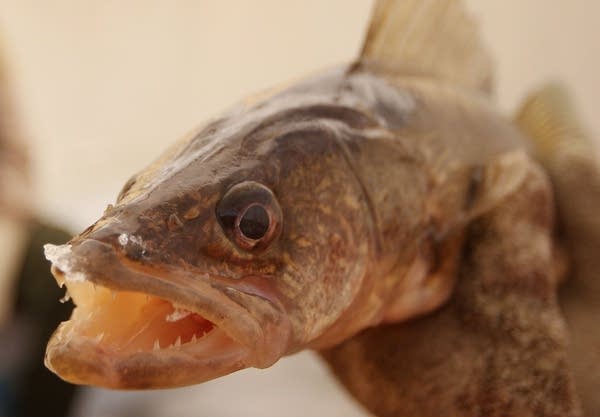Wisconsin walleye study shows 'something is not right'

A study of more than 400 Wisconsin lakes provides perhaps the strongest proof yet that walleye populations are in decline.
"There's this thought that all northern lakes are great walleye lakes and it's actually not true," said Andrew Rypel, an associate professor at the University of California-Davis who did the research while working for the Wisconsin Department of Natural Resources.
Analyzing data from 1990 through 2012, he found walleye production fell significantly, by between 47 percent and 63 percent. And walleye success varies widely with only a few very successful lakes.
"Actually most of the lakes with walleye are generally not that great of walleye lakes. It's the few really high profile ones that get all the attention, like Mille Lacs in Minnesota, for example," Rypel said.
Create a More Connected Minnesota
MPR News is your trusted resource for the news you need. With your support, MPR News brings accessible, courageous journalism and authentic conversation to everyone - free of paywalls and barriers. Your gift makes a difference.
The study did not try to determine the cause of declining walleye populations, which Rypel says is happening in lakes across Wisconsin, Minnesota and Ontario, Canada.
The reasons are likely complex impacts from many factors such as climate change causing lakes to warm, invasive species affecting food supplies, lakeshore development destroying habitat and pollution affecting water quality, said Rypel.
"The data are a warning sign that something is not right," he said. "And (it) raises the the flag that we might need to do something about this."
He hopes the study will cause natural resource managers, anglers and others to rethink walleye management.
"These are some of the best data available on walleye populations and so now we have a synthetic study that shows quantitatively how much biomass of walleye we've lost through time," he said. "And that is going to lead hopefully to some new science and some new analyses that start looking at, well, what does that mean for harvest, what does that mean for management, what does that mean for habitat projects? How can we start thinking about walleye management in a new way."
Minnesota researchers are also intensively studying some lakes in an effort to learn more about how changing lakes affect fish populations.